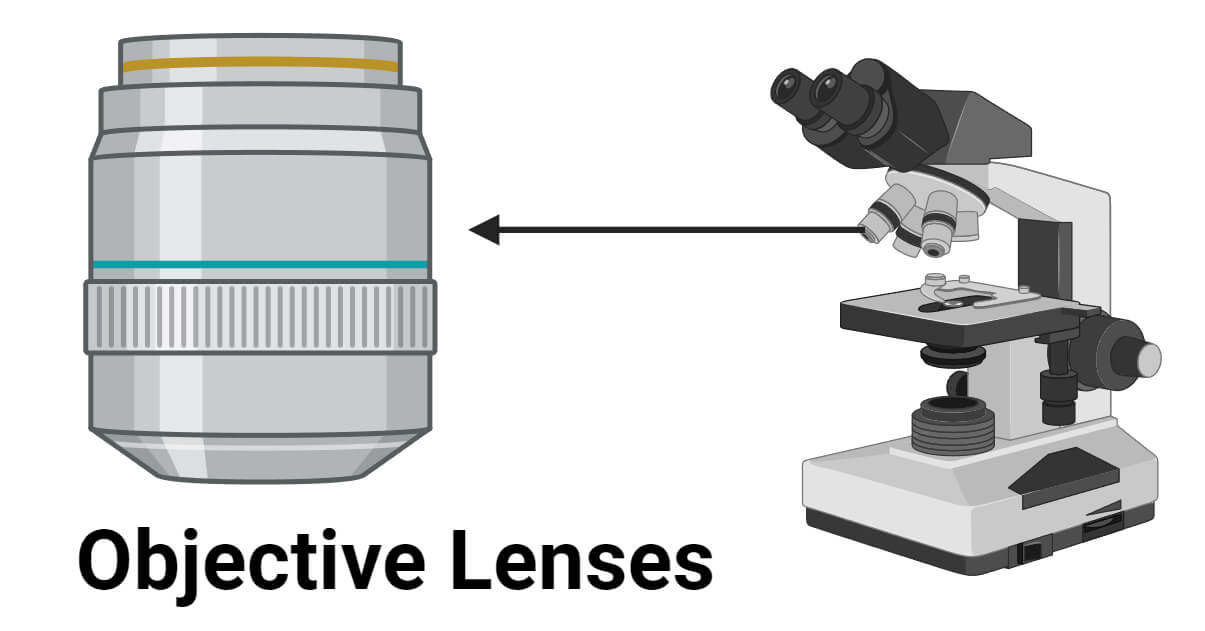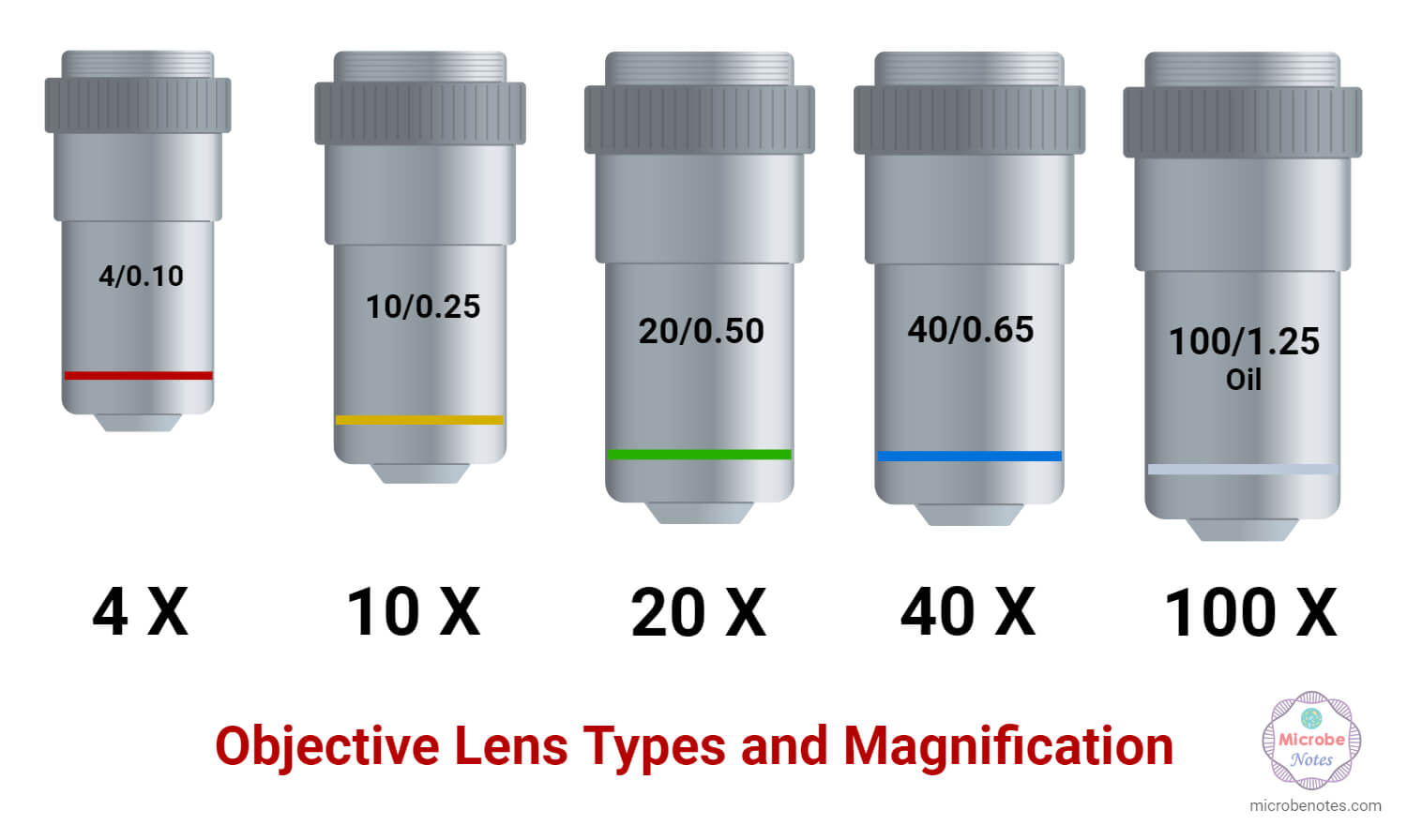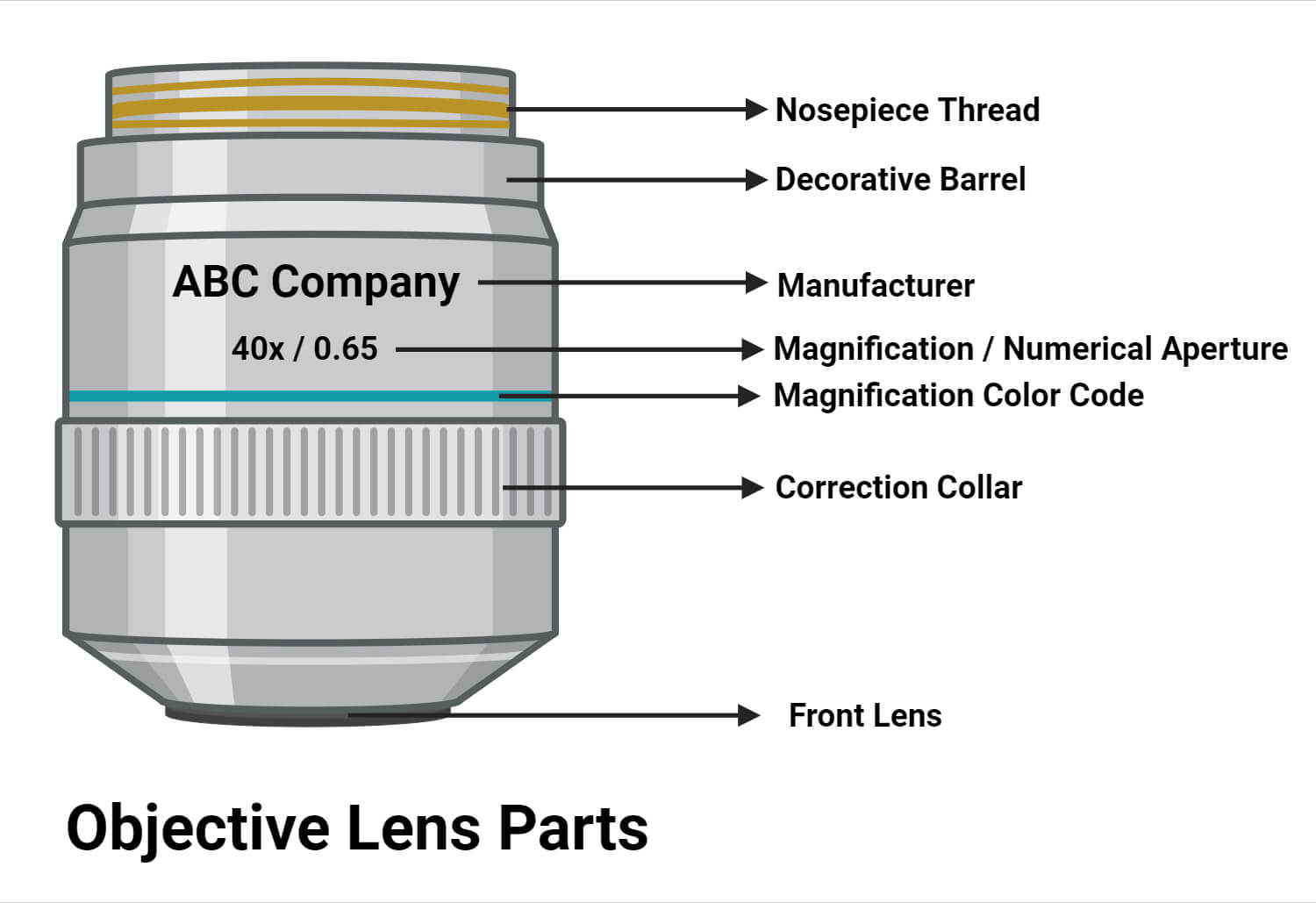A microscope is a unique tool that helps us see very tiny things, like little bugs or cells, which are too small for our eyes to visit independently. It uses a combination of lenses and light to make these tiny things look more prominent and transparent.
Objective lenses are like magic glasses for microscopes. They are the lenses closest to the tiny things we want to see. Different objective lenses have other powers to zoom in and show these little things in more detail. They are super important because they determine how much we can see and how clear the tiny things appear under the microscope.

Interesting Science Videos
Purpose and Function of Objective Lenses
Objective lenses are the primary lenses closest to the object being looked at in a microscope. They are like the eyes of the microscope. Additionally, these lenses gather light from the specimen (the tiny thing you want to see) and magnify it, making the model appear more prominent and transparent.
Magnification and resolution capabilities
Objective lenses can uniquely make small objects look much more significant. The number on the lens, like 4x, 10x, 40x, tells you how much the lens magnifies the specimen. The higher the number, the more the lens enlarges the object. Besides magnification, objective lenses also help determine how sharp and clear the image is, called resolution. The better the lens, the more details you can see in the tiny object.
Types of Objective Lenses
Low-power objective lens
Magnification range and typical uses
- Magnification Range: 4x to 10x
- Typical Uses: Observing larger specimens, getting a general sample overview, and locating areas of interest for higher magnification.
Characteristics and specifications
- A larger lens with a lower magnification power.
- Wider field of view (how much you can see at once).
- It is shorter in length compared to higher-power lenses.

Medium-power objective lens
Magnification range and typical uses
- Magnification Range: 20x to 40x
- Typical Uses: More detailed examination of specimens, studying cell structures and smaller microorganisms.
Characteristics and specifications
- A moderate-sized lens with a medium magnification power.
- Provides a balance between magnification and resolution.
- More precise details compared to low-power lenses.
High-power objective lens
Magnification range and typical uses
- Magnification Range: 40x to 100x or more
- Typical Uses: Detailed examination of tiny structures, studying individual cells, bacteria, or small particles.
Characteristics and specifications:
- A smaller lens with a higher magnification power.
- Higher numerical aperture (NA) for better resolution and clarity.
- Requires careful focusing and handling due to higher magnification.
Oil-immersion objective lens
Magnification range and typical uses
- Magnification Range: 100x or more
- Typical Uses: Examining microscopic structures and observing details at the cellular level.
Characteristics and specifications
- It is used with a unique immersion oil to improve resolution by reducing light refraction.
- Highest magnification power among the objective lenses.
- Requires a drop of oil to be placed on the specimen for optimal performance.
Factors Affecting Objective Lens Performance
Numerical aperture (NA)
- Numerical aperture (NA) measures the objective lens’s ability to gather and focus light.
- A higher numerical aperture allows for better resolution and more explicit images.
- The design and specifications of the lens determine the NA.

Working distance
- Working distance is the space between the objective lens and the observed specimen.
- Higher magnification lenses often have shorter working distances.
- Maintaining an appropriate working distance is crucial to prevent the lens from touching the specimen and allow for proper focusing.
Correction collars (e.g., for aberrations)
- Correction collars are adjustable rings on specific objective lenses that correct optical aberrations.
- Aberrations are distortions in the image that affect clarity and accuracy.
- Adjusting the correction collar helps optimize image quality by compensating for these distortions.
How to Choose the Right Objective Lens?
Matching objective lens to specimen and purpose
- Select the objective lens based on the size and type of specimen you want to observe.
- Consider the level of detail needed and the size of the specimen, and match it with the appropriate magnification and resolution of the lens.
Considerations for optimal results:
- Think about the required balance between magnification and field of view.
- Assess the lighting conditions and adjust the lens based on available illumination sources.
- Consider the numerical aperture for the desired level of resolution and clarity.
How do you maintain and care for objective lenses?
Cleaning and handling
- Clean the lenses with a lens-cleaning solution and lens paper designed for microscopes.
- Handle the lenses carefully, avoiding touching the glass with your fingers to prevent oil and dirt buildup.
Storage and protection
- Store the microscope with the nosepiece in the lowest magnification (usually the 4x or lowest-powered lens).
- Keep the microscope covered to protect it from dust and potential damage when not in use.
Conclusion
Understanding the critical role of objective lenses in a microscope is essential for compelling microscopic observations, with each lens offering a unique magnification and clarity. Factors like numerical aperture, working distance, and correction collars significantly impact lens performance, underscoring the importance of appropriate lens selection. Maintaining and carefully handling objective lenses is crucial to ensuring their longevity and sustaining high-quality microscopy.
References
- Shanghai Optics – Introduction to Microscopes and Objective Lenses
- Microscope World – Microscope Resolution
- Microscope World – How to Clean Microscope Lenses
- Microscope Central – Microscope Objectives Types
- Duke University – Clean an Objective | Light Microscopy Core Facility
- ACCU-SCOPE News & Events – Different Magnifications of Objective Lenses
- Biology LibreTexts – Magnification and Resolution

Helpful for beginners.